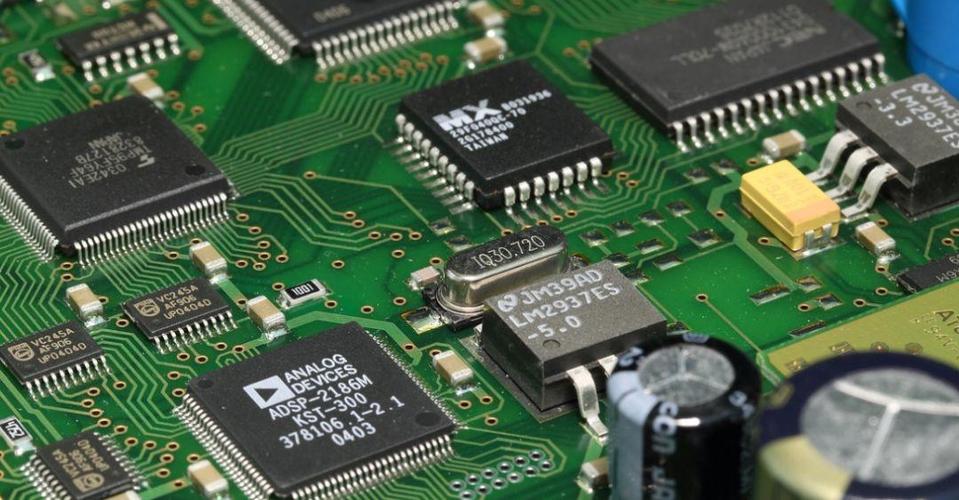Substrate materials are divided into rigid substrates and flexible substrates. Rigid PCB printed circuit boards such as copper-clad phenolic paper laminates, copper-clad epoxy paper laminates, copper-clad epoxy glass cloth laminates, which use phenolic resin or epoxy resin as the binder, paper The product or the alkali-free glass cloth is an electrical insulating laminate of reinforced materials, and is composed of one or both sides with copper foil.

The performance of the above substrate materials should meet the corresponding technical indicators in the national standard GB/T 4723~GB/T 4725. A large number of copper-clad epoxy glass cloth laminates are used in electronic communication equipment, and the general model is CEPGC-31; self-extinguishing The (flame-retardant) type is CEPGC-32, and the printed circuit board of this type is FR4 in the NEMA (American) standard.
1 Copper clad epoxy glass cloth laminate
It is a laminate substrate with epoxy resin as the adhesive and glass fiber cloth as the reinforcing material. Its mechanical properties, dimensional stability, and impact resistance are better than paper laminates.
The ε value of FR4 and FR5 is between 4.3 and 4.9. They have excellent electrical performance, higher allowable operating temperature (130°C for FR4 and 170°C for FR5), and are less affected by environmental humidity. They are widely used in electronic communication equipment. .
2 Epoxy glass cloth bonding sheet for multilayer board
It is a glass cloth material of pre-impregnated B-stage epoxy resin. It is used as an adhesive material to laminate and bond separate conductive pattern monolithic printed circuit boards (single-sided or double-sided) together when producing multilayer boards. . It functions as a dielectric insulating layer after lamination. It is pre-impregnated with epoxy resin with alkali-free glass cloth and cured to stage B. After the press molding, the epoxy resin is completely cured to become a rigid multilayer printed circuit board.
3 Self-extinguishing (flame retardant) copper clad laminate
In addition to the corresponding properties of the above-mentioned similar copper clad laminates, this material is also flame retardant, and has certain resistance to fire hazards and small fire spread caused by overheating of a single electronic component. It is suitable for electronic equipment with fire protection requirements. .
4 Copper-clad PTFE fiberglass board
Copper-clad polytetrafluoroethylene (Teflon, teflON, PTFE) glass fiber board is based on polytetrafluoroethylene as the binder and glass fiber as the reinforcing material. Its dielectric performance is excellent (low dielectric loss, tgd is 10-3 order of magnitude, dielectric constant coverage is wide, and the corresponding variety of substrates can be selected according to needs), high temperature resistance, humidity resistance, good chemical stability, and wide operating temperature range. It is an ideal printed circuit board material for high frequency and microwave electronic communication equipment. However, its price is high, its rigidity is poor, and the peel strength of copper foil is low, making it difficult to produce high-multilayer boards.
Commonly used polytetrafluoroethylene boards are printed circuit board substrate products produced by Rogers, Taconic, Arlon, Metcold, GIL and other companies.
5 Copper-clad metal base printed circuit board
It is also called a metal core printed circuit board. It uses metal (usually aluminum) plates of different thicknesses to replace reinforcing materials such as epoxy glass cloth. After special treatment, the metal surface is covered with low thermal resistance, high insulation and strong adhesion. The surface of the dielectric layer is formed by bonding copper foils of different thicknesses according to the needs of the circuit board.
Metal core printed circuit boards are used in high-density assembly and high-power-density applications, such as power circuits with high power dissipation. The advantages of the metal core printed circuit board are good heat dissipation and dimensional stability, and the metal substrate has a shielding effect.
Currently used are BergquiST and the 51st Research Institute of the Ministry of Information Industry.
6 Flexible printed circuit board substrate
Flexible printed circuit board substrate is made by bonding copper foil to a thin plastic substrate. The commonly used plastic film substrates are as follows:
(1) Polyester film. The working temperature is 80 degree Celsius~130 degree Celsius, the melting point is low, and it is easy to soften and deform at the soldering temperature; (2) Polyimide film: has good flexibility, as long as the absorbed moisture is removed by heat treatment, Can be safely welded. Generally, the adhesive polyimide film can work continuously at 150 degree Celsius. A polyimide material with fluorinated ethylene propylene (FEP) as the intermediate film and bonded with a special fusion-bonding adhesive can be used at 250°C.
(3) Fluorinated Ethylene Propylene Film (FEP).
is usually used in combination with polyimide and glass cloth. It has good flexibility and high moisture resistance, acid resistance and solvent resistance.
The above is an introduction to the varieties and characteristics of PCB substrate materials. Ipcb is also provided to PCB manufacturers and PCB manufacturing technology.